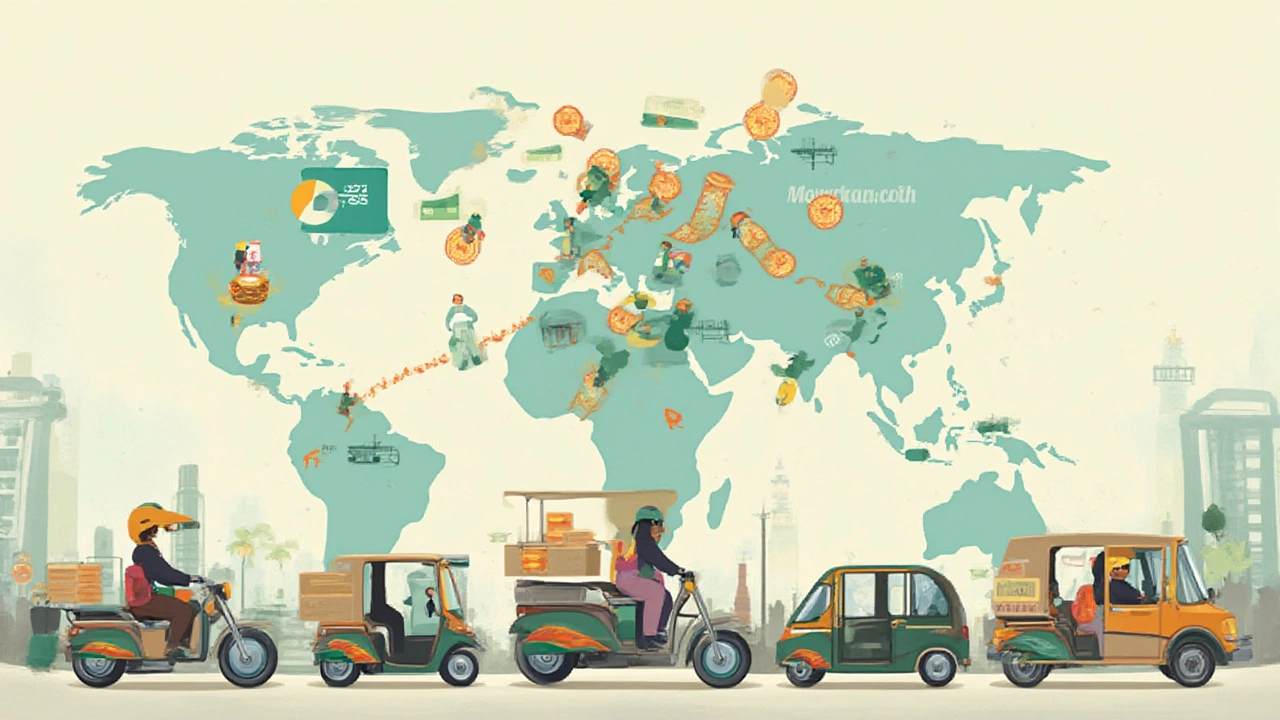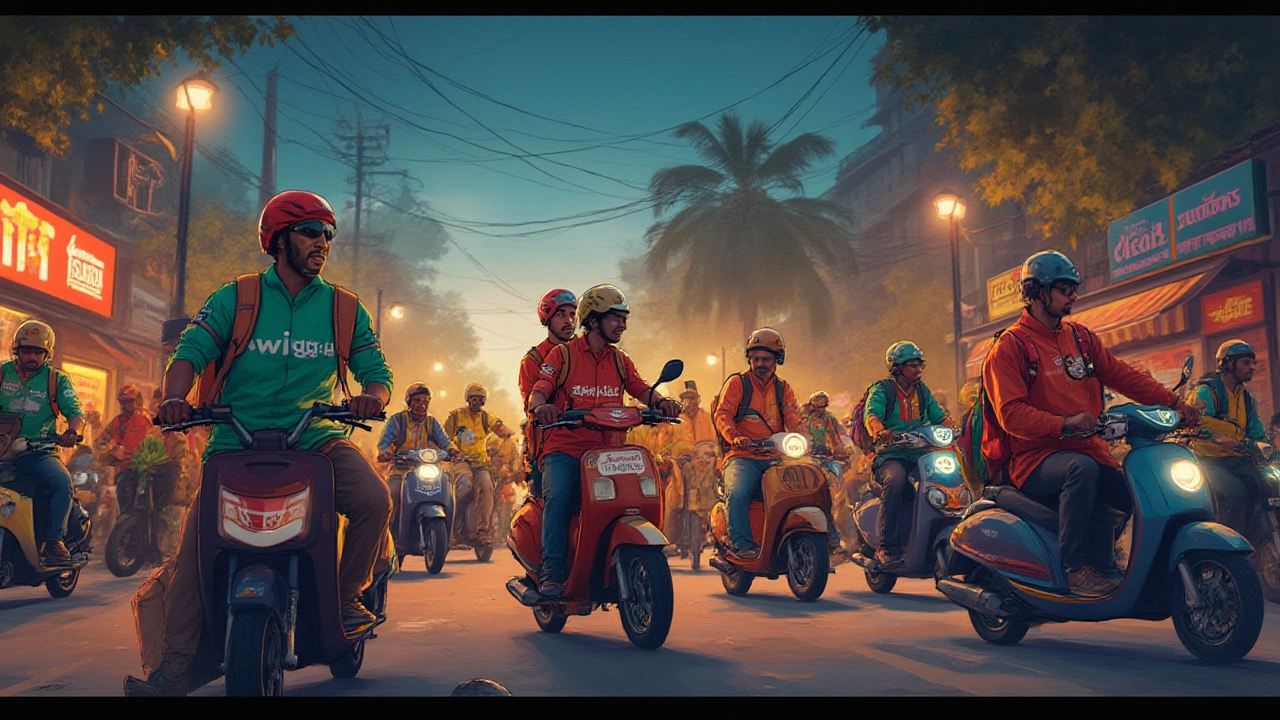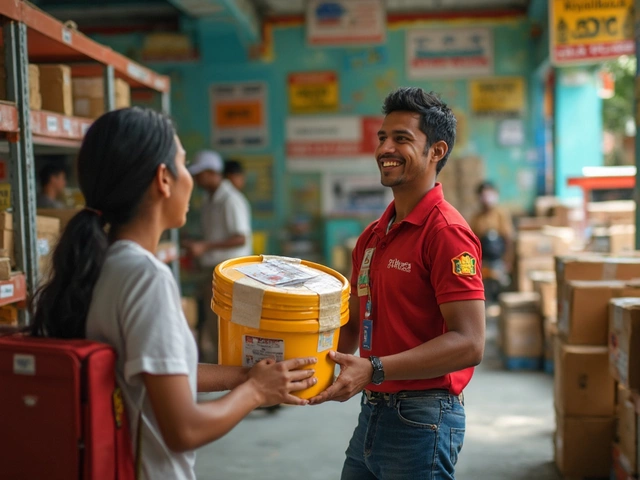Crack open most earnings charts, and you’ll see delivery drivers stuck somewhere in the middle—never topping the list, rarely scraping the bottom. Here’s a twist: dig deeper and some drivers are quietly bagging six figures, while others hustle for tips that barely cover petrol. So what gives? Why do some delivery gigs pay peanuts and others look like lottery wins? We’re going right into the nitty gritty, separating Uber myths from real numbers, and giving you the genuine lowdown—no sugarcoating or corporate fluff.
What Decides a Driver's Paycheck?
First things first: not all delivery jobs are created equal. Some drivers get steady paychecks with perks like health insurance and paid holidays. Others live on pure commission with every drop-off feeling like a mini gamble. But a few pay factors cut across the board, no matter if you're hands-on with pizza, parcels, groceries, or medical samples.
Delivery driver salary hangs on more than just hourly rates. Company, vehicle type, job risk, delivery item, and even the customer's mood all play real roles. Consider these:
- Company Reputation: Big names like FedEx, UPS, and DHL often shell out more—not only because their brand says 'trustworthy,' but because their trucks move precious stuff, sometimes over long hauls.
- Pay Structure: There’s hourly pay, per-delivery pay, and, for freelancers, pure gig-based rates. Some blend these with bonuses or surge pricing, especially at high-traffic times.
- Vehicle Used: Driving a semi or delivery truck usually means a better payday than zipping around in your own Corolla for pizzas.
- Location: Urban centers pay extra (think London, New York, Sydney), not just for high demand, but to lure drivers into monster traffic.
- Risk and Complexity: Moving medical equipment, hazardous goods, or luxury items cranks up wages because mistakes cost way more.
- Tipping Culture: If customers tip big—like in the U.S.—gig drivers can spike their hourly rate way above national minimums.
- Time of Day/Season: Night, weekend, or holiday delivery can push up base rates, sometimes by 30-50% or more thanks to surge rates.
But hey, that’s just theory. Let’s actually break down the real jobs.

Comparing the Main Players: Who's Paying Top Dollar?
Time for a direct side-by-side. Here’s how famous (and not-so-famous) delivery gigs stack up, based on real 2024 numbers pulled from driver review forums, company reps, and industry salary sites. Pay varies by country, but the pecking order is mostly global.
| Job Type | Average Annual Pay (USD) | Top Earners (USD) | Common Benefits |
|---|---|---|---|
| UPS Package Delivery | $61,000 | $105,000+ | Health, retirement, union |
| FedEx Ground | $53,000 | $95,000 | Health, PTO, overtime |
| Amazon Flex (gig) | $35,000 | $70,000 | Surge pay, flexible hours |
| Food Delivery (Uber Eats, DoorDash) | $28,000 | $60,000 (with tips) | Flexible, tips, bonuses |
| Courier (Medical/Lab) | $50,000 | $90,000+ | Bonuses, company vehicles |
| Owner-Operator Trucking | $110,000 | $180,000+ | Independent, high expenses |
| Grocery Delivery (Instacart, Shipt) | $32,000 | $65,000 (with tips & bonuses) | Flexible, tips |
So, who’s actually making the most? The top tier for pure delivery (non-trucking) is UPS. Veteran drivers, especially in union shops, claim to hit six figures with the right routes and overtime. FedEx comes close, though more routes are now subcontracted—good for business owners, less for drivers seeking clock-in jobs. Medical couriers are a hidden gem: fewer deliveries per day, but per-mile and urgency bonuses push incomes north of $70K, particularly for those willing to be on call or handle biohazards.
But let’s not forget the classic American hustle: owner-operator truck driving. These folks have the biggest take-home on paper. Some put away $180K or more, but they also shoulder fuel, truck loans, maintenance, taxes, and insurance. A breakdown can wipe out a week's earnings, so while the gross looks wild, the take-home—after costs—shrinks a lot.
Gig workers (Uber Eats, DoorDash, Instacart) can, with luck, stack bonuses, multi-app, and cherry-pick high-tip areas to edge past $50K. But average folks working regular hours, especially in smaller markets, land closer to $12-20 an hour after vehicle expenses. Amazon Flex? It lives up to its name. Some drivers love the short shifts and easy scan-to-deliver steps, but the pay rollercoasters between $18 and $25/hour, with rare surges in festive chaos like Black Friday or Prime Day.
Don't believe the recruiter hype about six-figure food delivery. Those stories exist, but dig into Reddit or Glassdoor and you'll see top earners are outliers—drivers working wild hours in premium zip codes, sometimes gaming promos or catching high-tipping events. For most, without bonuses or tips, it’s less than $20 an hour.
One eye-opener: delivery drivers making the most aren't always driving the fanciest vehicles or wearing branded jackets. It comes down to seniority, location, willingness to grind odd shifts, and sometimes just lucky timing when a bonus or surge lands.

Inside Secrets and Smart Strategies to Boost Your Delivery Pay
Chasing bigger paychecks in delivery isn't about sheer speed—it’s about playing the game smarter. Here’s what seasoned drivers and forums advise when it comes to boosting your income, dodging burnout, and staying ahead of the curve:
- Learn Your Territory: Track where surge pricing pops up most (downtowns at lunch, suburbs at dinner for food; hospitals and labs for medical runs). Route-optimising tech helps, but local knowledge trumps all.
- Multi-app Like a Pro: Many gig drivers juggle two or three apps. If DoorDash is dead, maybe Instacart or Uber Eats is spiking. Just avoid double-booking—dropping deliveries can hurt ratings or perks.
- Work Peak Times: For food and groceries, that’s Friday nights, weekend evenings, and major holidays. For courier work, end-of-quarters or holiday seasons see a surge in parcels.
- Track Your Expenses: Mileage, maintenance, fuel—all chip away at take-home. Apps like Stride or Everlance help keep receipts and track deductions. Every saved dollar counts.
- Bank on Overtime: UPS and FedEx drivers rack up real cash with overtime. Regulars say bidding for extra shifts or covering vacations is how you crack six figures.
- Pursue Specialisations: Delivering urgent medical samples, hazardous materials, or valuable electronics pays extra and faces less gig-app competition. Niche sometimes means less competition and fatter paychecks.
- Keep Ratings Sky-High: Tips and bonus runs often go to top-rated drivers. Greet customers, handle food with care, and avoid shortcuts that risk damage—simple, but often overlooked.
- Negotiate Where You Can: Owner-operators set their own rates. Don’t under-sell—know the market and negotiate fuel surcharges or waiting fees.
- Watch for Policy Shifts: Pay rates, bonus offers, and gig structures change fast. Reddit threads or Discord channels often break changes (good and bad) before official app emails do.
One killer tip: some cities have local Facebook groups for delivery drivers where pay hacks, shift swaps, and event spikes get shared only by word of mouth. If your city hosts major sporting events, conferences, or music festivals, odds are delivery rates or tips quietly spike. Time your shifts just before and after the main action and you’ll often bag more without working twice as hard.
Insurance, sadly, is the quiet killer. If you drive full time or deliver high-value or medical items, check your insurance—normal car insurance usually does not cover commercial use. The right coverage might cost more upfront but could save you from going bankrupt if stuff goes sideways. Some companies, especially for medical and hazardous deliveries, require special clearances or background checks, but the pay bumps are worth jumping the hoop.
Still, no magic formula trumps endurance and hustle. The highest paid delivery drivers got there by constantly scanning their options, knowing when to jump companies, and working smarter—not harder. For those who thrive on flexibility, the gig world opens doors to side hustles, but for lifetime security and serious pay? UPS, FedEx, and niche couriers usually rule the roost.
Coming up in the next few years? Electric vans, air drones, and more automation mean driver roles may evolve. But for now, if the paycheck is your pressing question, the answer is simple: chase union carrier jobs, bag those overtime shifts, learn the local gigs and bonuses, and never stop tracking where maximum demand meets minimum competition. That’s where the real money lives.





